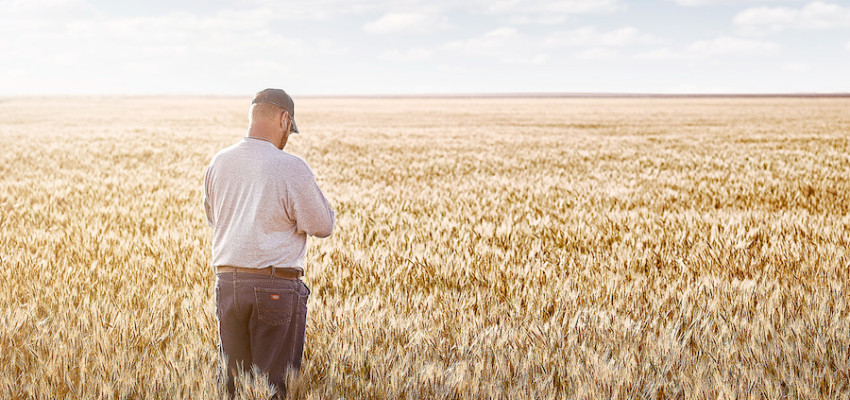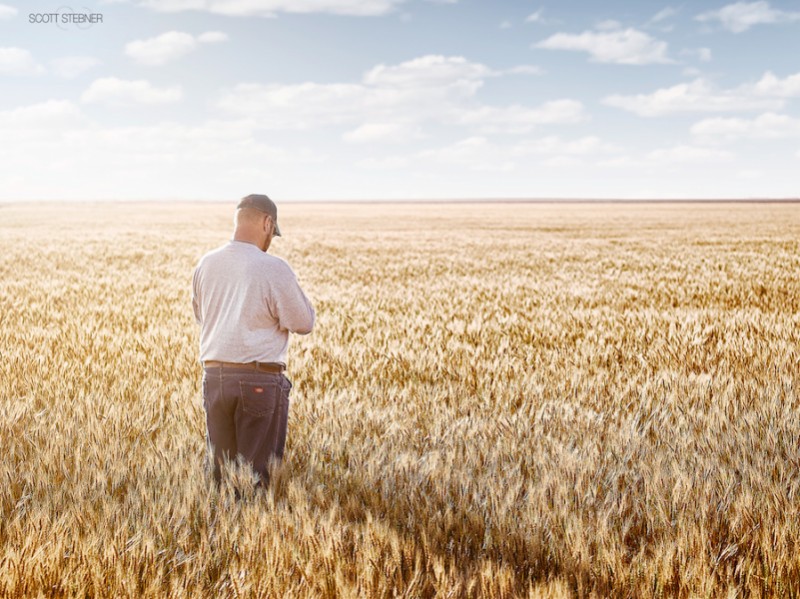By Hannah Becker on April 1, 2016
Agriculture and wildlife, how do they co-exist?

More than 30 years ago, The Journal of Soil and Water Conservation published an article entitled, “Wildlife and agriculture: Can they coexist?” (Carlson, 1985). The author voiced concerns over the industry trend of regarding wildlife as “pests” versus recognizing farmers’ essential role as wildlife conservationists.
I recall this controversial journal article starting an Animal Science class discussion during my undergrad experience, emphasizing the important role agriculture professionals play in protecting our earth and the animals within. As an avid sportsman and farming fanatic, I was particularly intrigued by the symbiosis between my two most favored pastimes required for sustainability.
Agriculture needs wildlife, and wildlife needs agriculture for a healthy world to continue to exist.
This necessity of coexisting is as relevant a discussion today as it was in 1985. With more than 80 percent of threatened and endangered species relying on privately owned land for their habitat needs today’s farmers play a huge role in conserving our ecosystems (U.S. Fish & Wildlife Services).
In 2014, President Obama signed the farm bill into law – a legislative move that represented the single largest federal investment in conservation on private lands in U.S. history. In addition to outlining provisions for food assistance and crop subsidies, the farm bill also provided conservation program funding that helps farmers safeguard wildlife habitat, protect streams and wetlands, and reduce the environmental impact of modern production practices.
The American Farm Bureau Federation reports more than half of America’s farmers intentionally provide habitat for wildlife. Farm bill initiatives help farmers enhance wildlife habitats on their land, an initiative that can be evidenced by the more than 2 million miles of conservation buffers installed as a result. Significant population increases in wildlife species including deer, moose and fowl have been noted since the program’s inception.
Kansas Farm Bureau recognizes the important role farmers play in wildlife conservation, as evidenced by their political advocacy to provide incentives to private landowners and public land users to protect endangered and threatened species such as the Lesser Prairie Chicken. From 2014 to 2015, the Lesser Prairie Chicken population was reported to have increased by a whopping 25 percent with a five state region (including Kansas). As a species relying almost entirely on farmland for their habitat, the resurgence of the Lesser Prairie Chicken is just one example of how agriculture can implement conservation initiatives to help endangered and threatened wildlife.
Can wildlife and agriculture coexist?
Yes – I believe these two essential components of our ecosystems can not only coexist, but also thrive in a terrifically symbiotic relationship.
Increasing wildlife populations, habitat preservation and recent conservation incentives are evidence of the progressive responsibility today’s agriculture industry has pledged. As an outdoor enthusiast, I’m encouraged the Kansas wildlife I spend hours photographing will be around for my grandchildren to enjoy. As a farmer, I’m excited to play such an important role in preserving (and even creating) habitats essential for our wildlife to thrive right here on my farm in Franklin County.
Historically, agriculture and wildlife have always shared a unique, intimate relationship. Both stewards of the land, sharing resources and territory in a symbiotic manner, agriculture and wildlife represent a beautiful harmony between man and nature.
Let’s continue to prioritize wildlife conservation programs and agricultural initiatives necessary to provide resources essential for a balanced ecosystem.



